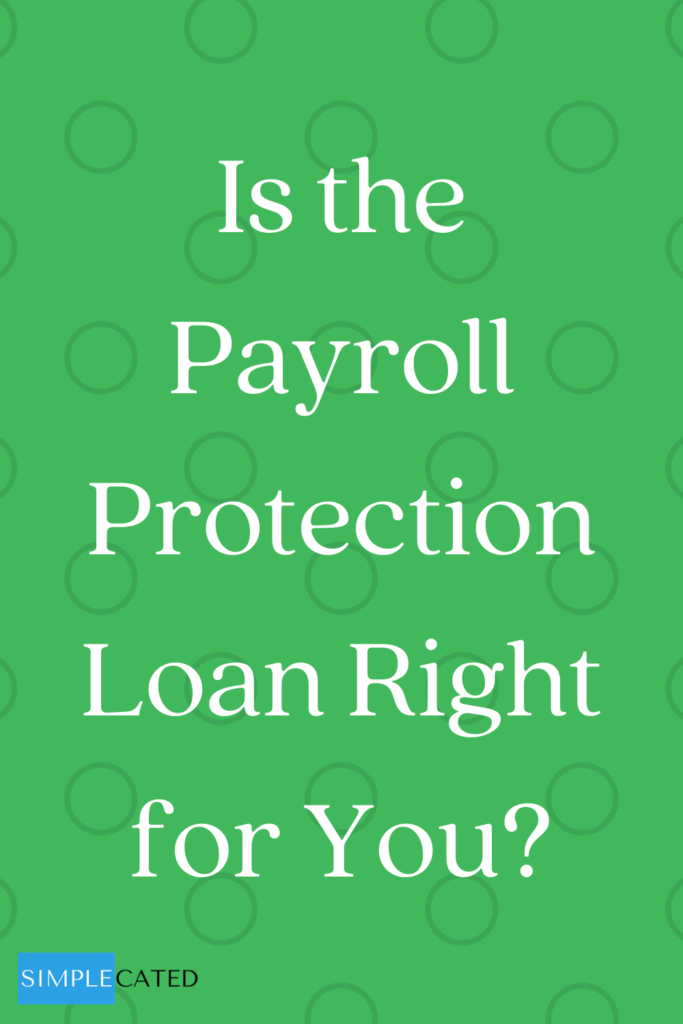Originally published April 3, 2020. Updated June 29, 2020, to reflect PPPFA updates. On July 3, 2020, the application deadline was extended to August 8, 2020.
If you’re a small business, you may be starting to have difficulty paying your employees as you may have decreased revenue coming in or your business may not be operating at all right now. The Coronavirus Aid, Relief, and Economic Security (CARES) Act includes a provision for almost $350 billion for the Payroll Protection Program to help small businesses with assistance in paying their employees. There are also ways that this loan can be forgiven.
Here are the highlights of this loan:
- It’s available to small businesses with 500 or fewer employees. This includes nonprofits as well as those who are self-employed or independent contractors.
- It provides assistance to pay for up to
824 weeks of payroll expenses, including benefits expenses. You can also use this money for rent, utilities, and mortgage interest. The amount of the loan can be up to 2.5x your average monthly payroll costs (capped at $10 million). Note that it doesn’t include costs for providing paid sick leave or extended family leave under the Families First Act. - Businesses and sole proprietorships can apply starting April 3, 2020. Those who are self-employed or independent contractors can apply starting April 10, 2020. The program is available through
June 30, 2020December 31, 2020. There is a funding cap, so the Treasury Department encourages you to apply quickly. - The loan can be forgiven if the money is used on the above qualifying expenses (payroll, rent, utilities, and mortgage interest). Note that, because it’s expected so many will apply for this loan, at least
75%60% must be used for payroll if you want the entire loan to be forgiven. - For the loan to be forgiven, businesses must retain their employees (or quickly rehire them) and maintain their pay rate. Otherwise, the amount of loan forgiveness is reduced.
Contact your bank for more information to determine if they’re participating in extending this loan and for assistance in applying for it. The U.S. Chamber of Commerce has a very helpful guide regarding this loan.
How do you know if this loan is right for you? There are a few important things to consider.
Will this loan help your business survive? Review your additional operating expenses to determine the amount that won’t be covered by this loan. How long can your business survive? If you anticipate that you’ll be able to either continue receiving some revenue or be able to resume operations relatively soon, then this loan may be helpful for you. If the outlook is bleak, think carefully about whether this loan would just prolong the inevitable and then result in an additional cost for you of having to repay this loan.
Do you have work for your employees to do? If you’re going to pay your employees, it’s best to have at least some work for them to do, even if it only takes them a portion of the hours they usually work. That way, you don’t pay for nothing. This isn’t intended to be a waste of anyone’s time, so you’ll want to be sure you’re assigning meaningful work. Depending on your particular business, this may take some creativity, but try to think outside the box. Are there projects that have been difficult to find the time for? How can your support your customers? Include your employees in brainstorming ideas – there may be things they’ve been wanting to accomplish as well!
Will you still need to reduce your staff or reduce wages even with a loan? If you reduce the number of your employees or reduce their pay, the amount of the loan that can be forgiven also reduces. Note that, if you reduced staff or wages between February 15, 2020, and April 26, 2020, you can still have the entire amount of the loan forgiven if you correct this by June 30, 2020 December 31, 2020. If you’re considering reducing your staff, take into account the cost of rehiring later on. Some of them may find other jobs in the meantime (a lot of companies are hiring right now!), so it may not be as simple as hiring back the same employees.
Can you afford any amount that wouldn’t be forgiven? According to the SBA, the interest rate is 1%, the loan is due in 2 5 years, and payments can be deferred for 6 months (possibly longer due to the PPFA updates). (I’ve seen some other numbers for this too, though, so be sure to verify with your lender.) Depending on your loan amount, this could still be a substantial number. You’ll want to estimate how much you may need need to pay back and take into consideration how well you anticipate your business will be operating in the coming months and whether you can afford this.
What fee is your bank charging? Lenders are allowed to charge a fee, so make sure to ask your bank how much they’ll charge you for this loan.
Is this a loan you truly are in need of? There is a cap on the total amount of money available for all the small businesses in the country. If you need it, certainly apply – that’s what it’s here for. If you don’t truly need it, leave it for others who do. Plus, we all know that money isn’t ever really “free,” so ultimately the money for this program will have to come from somewhere.
If you think this loan would help your business survive and your employees be paid, and you anticipate having all or most of the loan amount forgiven, then this could be a great option for you. Make sure to communicate with your employees about actions you take to help them. You want them to know you’re there for them and are trying your best to support them. Consider a communication plan with your customers too. People are paying attention to whether companies seem to be genuinely taking care of their employees, so let them know what you’re doing. It may even result in increased revenue for your business!
Photo credit: By mirzamlk / Canva





